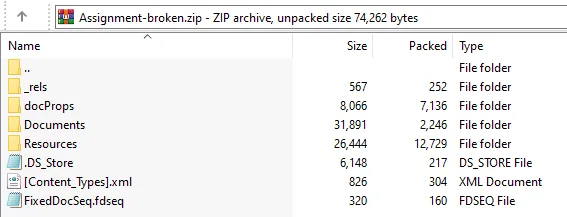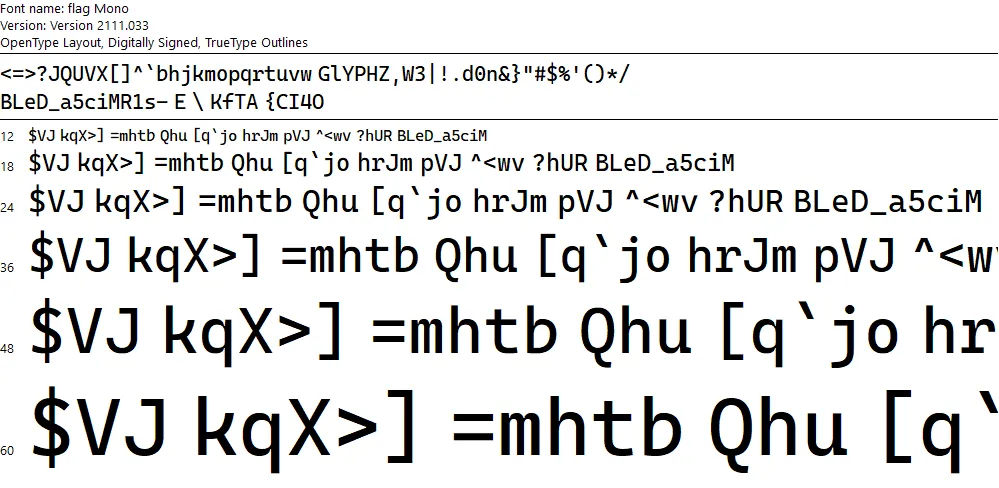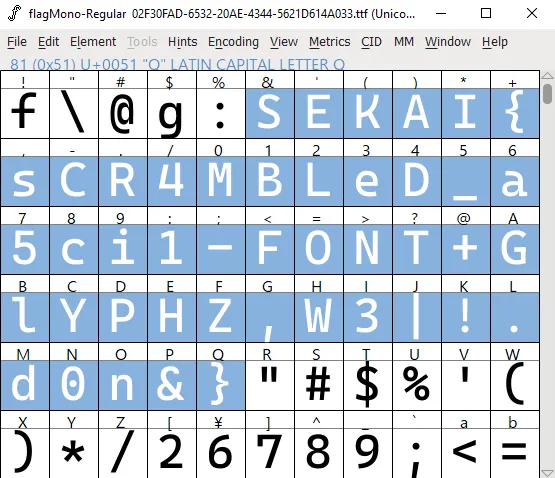Broken Converter
- Author
- blueset
- Category
-
Forensics - Points
- 100
- Solves
- 94
- Files
- Assignment-broken.xps
- Flag
-
SEKAI{sCR4MBLeD_a5ci1-FONT+GlYPHZ,W3|!.d0n&}
Miku has finally finished her assignment and is ready to submit - but for some reason, the school requires all assignments to be submitted as .xps files. Miku found a converter online and used the converted file for submission. The file looked good at first, but it seems as if there’s something broken in the converter. Can you help her figure out what’s wrong?
Note
This challenge shares the same file as flag Mono.
Reading the Wikipedia page for Open XML Paper Specification/.xps files, we can see that Assignment-broken.xps is actually a .zip archive:
An XPS file is a ZIP archive using the Open Packaging Conventions, containing the files which make up the document. These include an XML markup file for each page, text, embedded fonts, raster images, 2D vector graphics, as well as the digital rights management information. The contents of an XPS file can be examined by opening it in an application which supports ZIP files.
Renaming the file extension to .zip will provide us with some files:

In Resources/ we can find 02F30FAD-6532-20AE-4344-5621D614A033.odttf, which is an “Obfuscated OpenType” file:

The ODTTF Wikipedia page states that .odttf files are obfuscated by performing a XOR operation on the first 32 bytes of the font file, using its GUID (or the filename) as the key:
According to the source code of Okular (see function
parseGUID()and methodXpsFile::loadFontByName()), the first 32 bytes of the font file are obfuscated by XOR using the font file name (a GUID). The rest of the file is normal OpenType.
This is also mentioned in section 9.1.7.3 of the XPS Standard:
Perform an XOR operation on the first 32 bytes of the binary data of the obfuscated font part with the array consisting of the bytes referred to by the placeholders B37, B36, B35, B34, B33, B32, B31, B30, B20, B21, B10, B11, B00, B01, B02, and B03, in that order and repeating the array once. The result is a non-obfuscated font.
Although you can totally create a XOR script and perform it manually, you can also find scripts online. odttf2ttf provides an online demo here, which is a simple drag-and-drop with instant conversion:

Now that it’s deobfuscated, we can open the file in Windows Font Viewer. The phrase GlYPHZ,W3|!.d0n&} is visible at the top, but the rest of the flag isn’t properly ordered:

However, opening the .ttf file in programs that sort by ASCII, such as FontForge or FontDrop!, will yield a flag:
